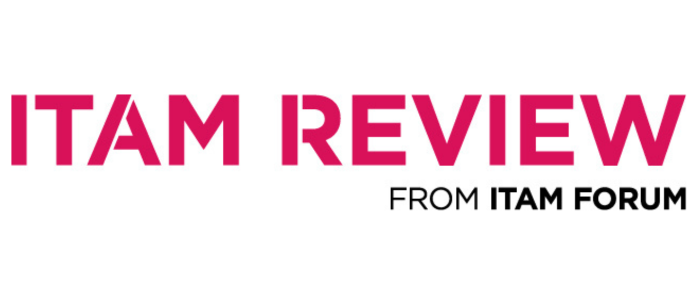What should we be doing to manage new technologies?
 Our upcoming USA conference, in St Petersburg, Florida, looks at the ‘Next Generation of ITAM’, a concept which includes topics such as:
Our upcoming USA conference, in St Petersburg, Florida, looks at the ‘Next Generation of ITAM’, a concept which includes topics such as:
- Infrastructure as a Service (like Azure and AWS)
- Software as a Service (like Office 365 and Adobe Creative Cloud)
- Internet of Things
- Open Source
- Cyber Security
And more. These are new opportunities, and new risks, for business to navigate and it is important for ITAM professionals to be prepared. While they represent change in how we, and our wider organizations, work – that change isn’t wholesale.
Building on existing foundations
As Mathias Knops, COO of Silver Sponsor Aspera says:
“we can adapt what we already understand – and are doing in SAM – to these new challenges”
New asset types are business-as-usual for ITAM teams. Industry veterans will have seen many deployment scenarios come, go, and even come back again. In some ways, public cloud is similar to time-sharing on mainframes. Each new asset type or deployment scenario has required new tools, people, and processes layered on top of what was already being done. For example, when virtualization reached mass popularity, tools needed updating and new processes were required – but it was generally just an advancement of the existing discipline.
Extending our scope
That said, these new asset types increase our scope substantially:
- An IoT device may increase the license requirement for network management or security tools, and our tools will therefore need to inventory it.
- Cloud computing requires second-by-second monitoring to keep costs in check, whereas an on-premises, relatively static Datacenter doesn’t require this level of attention
- SaaS subscriptions need to be managed differently, with a much more regular touch, compared to perpetually-licensed apps which may require an annual true-up.
Where to start?
Kops recommends there are 3 steps a SAM Manager should consider:
- Make sure you have adequate scanning/discovery technology in place that supports the increasing number of scenarios and platforms
- Check for specific license terms and conditions for software products being used on cloud platforms
- Try to find common denominators with scenarios you already know, and weave the new technologies into your existing software license management processes
The proliferation of assets and deployments may require additional team members or new skills to be developed. Processes will need to be updated to manage new scenarios, for example, mandating that cloud hosted non-production environments are powered-down when not in use.
Our focus on Next Generation ITAM for this conference will see several sessions covering these new deployment scenarios and asset types. Our sponsors are innovating new solutions to discover, inventory, and optimize these new types of assets. You will also hear about the people and processes needed to manage them, and the new stakeholders you’ll be working with.
Out with the old, in with the new?
Not at all!
Traditional ITAM is still hugely important and organizations must be careful not to lose focus on the core elements of ITAM. Tomás O’Leary, CEO of Gold Sponsor Origina, makes a great point when he says:
“It becomes crucial for SAM not to turn a blind eye to the legacy software that they are currently maintaining so that it can ensure a cohesive software environment.”
The road to the cloud is long and, even once they’re made it, most businesses will find themselves – for myriad reasons – retaining infrastructure on-premises. Combining our existing skills and knowledge with an enthusiasm to learn and understand these new technologies is where ITAM managers can really shine.
As O’Leary says, ITAM managers must ensure they are:
“taking into account the digital transformation and migration of software assets that…are currently moving to the cloud”
Keeping track of what is moving to the cloud, to ensure compliance and cost optimization, will be a key part of an asset manager’s role, alongside managing the new asset types available in the cloud.
What does it mean for me?
We are already living in a hybrid multi-cloud age where our applications are hosted wherever they best fit – be that our on-premises datacenter, a co-location site, or in one (or more) of the public clouds. This increase in complexity is an open goal waiting for ITAM Managers. We have the skills and experience to deal with the various challenges presented by Digital Transformation projects and, with the right amount of passion and #learningneverstops thinking, ITAM professionals around the world can use this as an opportunity to take on new responsibilities, grow themselves, and really make a difference to their organization.
If you’re not booked on already, register below to join us and hear more about these exciting topics.
ITAM Review, USA Conference 2019, Florida, March 13-14
Can’t find what you’re looking for?
More from ITAM News & Analysis
-
How IT Can Contribute Towards UK Government Efficiency Drive Without Impacting Services
UK Chancellor Rachel Reeves recently announcement a 5% efficiency savings target across all government departments. With UK public services under pressure, departments must ensure these savings do not come at the expense of essential services. Reeves ... -
'Big' ITAM News For 2024
As we come to the end of 2024, we wanted to recap some of the ‘biggest’ 2024 ITAM, SAM and HAM new stories along with commentary for our team of industry analysts. February. Flexera Acquires Snow ... -
Wisdom Unplugged UK 2024: Insights and Findings
The Wisdom Unplugged UK event, held in London on 26 November 2024, brought together a diverse group of ITAM professionals, partners, service providers, and independent consultants. The event focused on practical insights, collaboration, and tackle pressing ...
